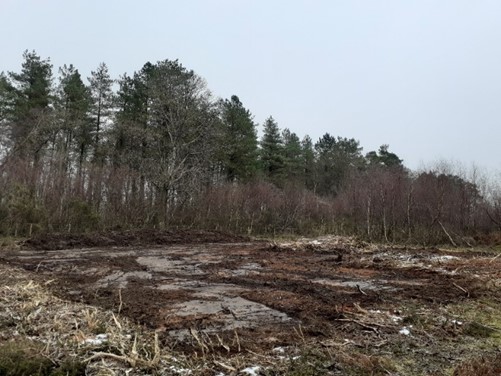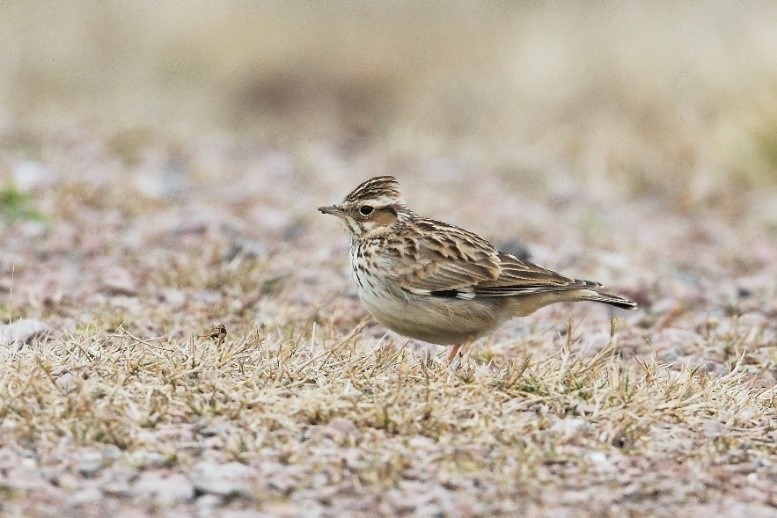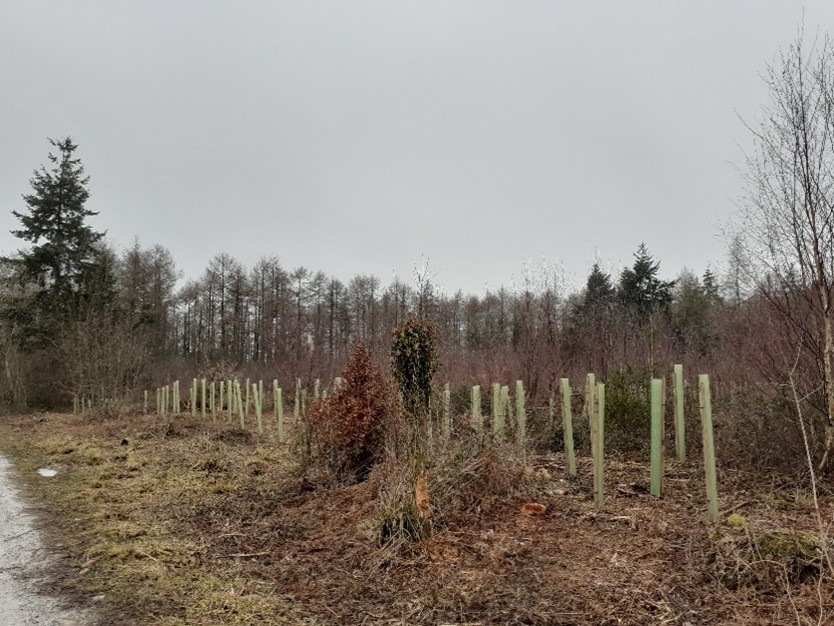Creating new habitat for rare birds
This week we have invited Emily Bennett, our Birds Project Leader, and Assistant Warden / Assistant Conservation Officer for the RSPB, to provide a ‘guest blog’. Emily provides us with a fascinating insight to the work that has been completed this winter and the bird species that are benefiting:
“The Foresters’ Forest Birds project has been busy this winter creating new habitat for some of the Forest of Dean’s rarest birds.
Bare ground scrape creation
At Tidenham Chase, a Gloucestershire Wildlife Trust nature reserve, we have worked with the trust to create five large bare ground ‘scrapes’ within the heathland. This work entails scraping back the top layer of soil to expose the bare ground beneath. The material is then used to make a bank or ‘bund’ on the north end of the scrape facing south.
This new bare ground provides important habitat for birds such as the woodlark to forage on. As woodlark can travel over long distances across the Forest of Dean to forage, it is beneficial to have a number of these bare ground scrapes spread out in key open areas. These new five scrapes are an addition to the 21 already created through the project.
As well as foraging across these bare ground habitats, woodlark will also use them to nest and breed once they begin to grow, digging shallow scrapes in which to build their nests. Their nests will be among grassy tussocks and other pioneering plant species, such as heather and grasses, that begin to grow as the bare ground starts its successional journey back into heathland.
 Photo: Bare ground scrape creation at Tidenham Chase
Photo: Bare ground scrape creation at Tidenham Chase Many other species thrive on this bare ground habitat. The south facing bank provides a great place for reptiles such as adder and lizards to bask and warm up in the sun. Invertebrates also use these areas including mining bees, butterflies and beetles as well as other birds such as nightjar and tree pipit.
Woodlark are making a comeback in the Forest of Dean, having previously had a stronghold here. A lack of open habitat has driven these birds to move elsewhere in search of open areas. Through management work such as clear fell raking to expose more open ground and creating these bare ground scrapes, woodlark are showing signs of re-colonising the area, with regular sightings and several breeding attempts in recent years.
 Woodlark in the Forest of Dean. Photo: Lewis Thomson, RSPB
Woodlark in the Forest of Dean. Photo: Lewis Thomson, RSPBTree planting for Hawfinch
Other recent habitat creation work has included planting over 1,650 hawfinch-friendly trees across the Forest of Dean this winter. The hawfinch is another declining bird which is struggling nationally. The Forest of Dean is one of the last strongholds for this elusive species. Hawfinch are seed-eating birds and need access to seed all year round. Their eating habits are unfortunately adding to their struggles, reduced diversity of tree species across the landscape has resulted in seed shortages at different times of the year. The trees we have planted are a mix of wych elm, hornbeam, rowan, cherry, hawthorn, blackthorn, yew and holly. These are all trees that the hawfinch love to feed on. Wych elm is particularly important as it seeds in spring; a time when the hawfinch is usually lacking in food and needs to be in good condition for the breeding season.
Hawfinch photo - main image above: Lewis Thomson, RSPB
1,000 trees have been planted at Oakhill Wood near Tidenham and another 650 trees have been planted at Beechenhurst with the help of Forestry England.
 Photo: Trees planted at Oakhill Wood
Photo: Trees planted at Oakhill WoodSo far in the project, 6,150 hawfinch-friendly trees have been planted over 8.2 hectares throughout the Forest of Dean. The trees are planted in protective tree shelters to help them grow in their early years without being damaged by deer and squirrels. These shelters will be taken off and collected when the tree has outgrown them, allowing these trees to mature and become a haven for many woodland species.”
Emily Bennett, RSPB
Foresters’ Forest Birds Project Leader
To find out more about this project see Birds and see Emily describe her project in our film 'Connecting People to Nature'